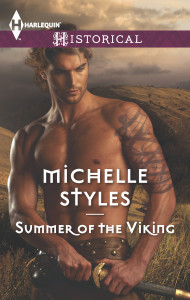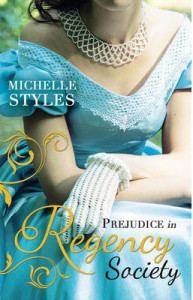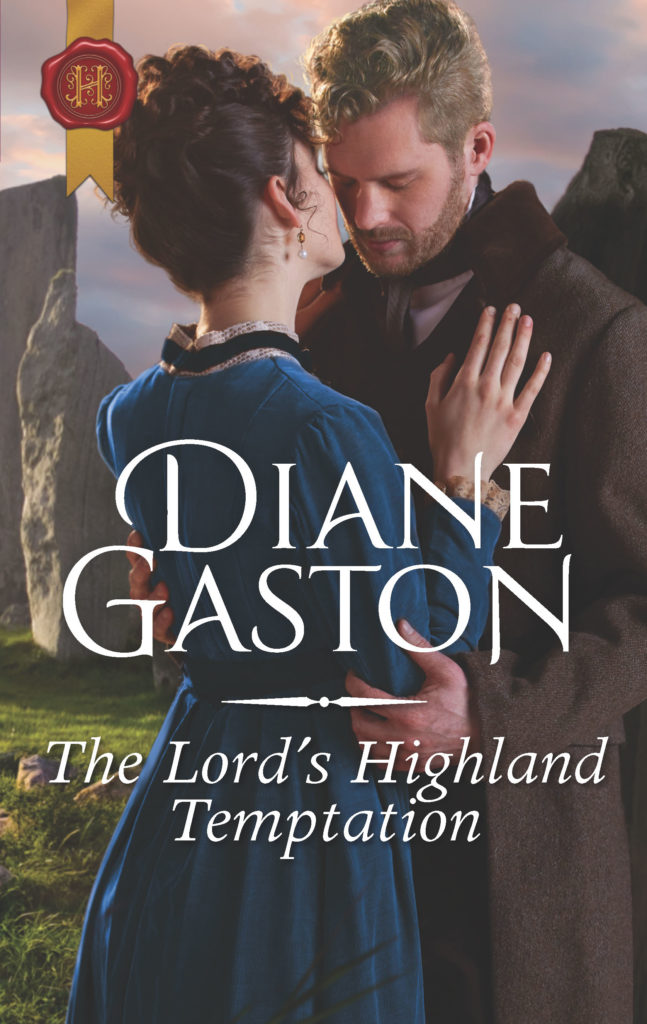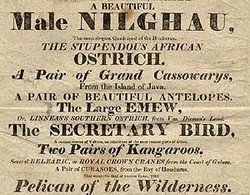 Welcome my friend and fellow Harlequin Historical author Michelle Styles who writes in a variety of time periods, including Roman, Victorian, Regency and Viking. Michelle is the perfect person to explain to us how Viking Romance differs from Regency Romance and how they are alike.
Welcome my friend and fellow Harlequin Historical author Michelle Styles who writes in a variety of time periods, including Roman, Victorian, Regency and Viking. Michelle is the perfect person to explain to us how Viking Romance differs from Regency Romance and how they are alike.
Michelle’s latest Viking Romance, Summer of the Viking, is available June 1. Prejudice in Regency Society was a special UK release in April, easily available to North American readers from Book Depository.
Here’s Michelle!
As I write both Viking and Regency Romances, Diane Gaston thought this blog would be the perfect opportunity for me to compare and contrast the two time periods. A bit like the questions I used to always answer on high school history exams.
The big similarity is that they are both romances. At their heart, Viking and Regency romances are about the growing emotional relationship between the couple. Society may change but deep human emotions remain the same. This fact makes it easier for an author to find a way into a time period. Ultimately romance is about the emotions and the characters’ emotional reactions to the events which overtake them, within the confines of the society they exist in.
 Regency society is an urban society. People have banded together and live in cities. This puts certain pressures on behaviour and accepted standards of behaviour. Like Western settings, Viking romance are rural. Although urban centres did exist, I am not sure we would recognise them as cities in the same way that we do now or indeed as the Regency did. It means many activities were done within the home — hard for a heroine suddenly to acquire a new wardrobe, for example. Or to go to the theatre. Or meet friends for tea.
Regency society is an urban society. People have banded together and live in cities. This puts certain pressures on behaviour and accepted standards of behaviour. Like Western settings, Viking romance are rural. Although urban centres did exist, I am not sure we would recognise them as cities in the same way that we do now or indeed as the Regency did. It means many activities were done within the home — hard for a heroine suddenly to acquire a new wardrobe, for example. Or to go to the theatre. Or meet friends for tea.
Because society was far more violent, the choice of occupation for the hero is far less. Basically, unless the hero became a priest, he would be a warrior. He would also be a merchant, farmer and a politician but under-pinning all of this was his status as a warrior. His skill with the sword and shield as well as leading men will have been tested. He will have travelled as the Vikings were forced to look beyond their shores for trade.
 Regency heroes can and do have lots of different occupations and hobbies. They do not necessarily have to be leaders of men in battle or skilled with weaponry. They can be more refined, if you will. It means their reactions to various events may be different than that of a Viking. Viking heroes tend to be the ultimate in alpha male dom. Regency heroes while still alpha are not quite so uber, unreconstructed.
Regency heroes can and do have lots of different occupations and hobbies. They do not necessarily have to be leaders of men in battle or skilled with weaponry. They can be more refined, if you will. It means their reactions to various events may be different than that of a Viking. Viking heroes tend to be the ultimate in alpha male dom. Regency heroes while still alpha are not quite so uber, unreconstructed.
The rate of literacy was far lower in the Viking era. The whole concept of sitting down and reading was alien to a certain extent. Theirs was an oral culture which means memory was hugely important. There was no such thing as university, for example. Young men might go away to be trained but the universities are founded because of a need for clergymen, rather than for warriors. Equally for the writer, the ordinary Regency voice is accessible through diaries, journals and other published sources. Nothing like that exists for the Viking period. We can’t be precisely sure of the slang or the exact manner of speech. This can be also considered a blessing as there is no one to tell you that you made an error either.
Equally the concept of private space was different. There was much more communal living. The hearth was central in the room, rather than being at one side and things happened in the great hall. While the lord might have a private hut or chamber, there were no great houses with little nooks for privacy.
Sexuality and marriage were different. As the Viking society was pre-Christian until near the end of the Viking period, the taboos against divorce or indeed sex didn’t exist. Women could divorce as well as men. Indeed several sagas use this as crucial plot points. Men could take mistresses. And sometimes would have more than one wife. However, from we know from the sagas, polygamy was not popular and most had one wife at a time. Men could also have mistresses and there were various concepts of legitimacy. Children belonged to the man and he was expected to contribute to their upbringing. So if a noble had a one night stand, he would leave a token for the woman in case there was a result. The population pressure was not great and incidence of child mortality was high. Men needed heirs.
Communication was far worse in Viking period. We do not know how long it took for a message to get between two places. Transport was also much more primitive. The roads were appalling to non-existent and those who could travelled by boat.
Slavery existed but it was different from what we think of as slavery today. It was very possible for a high born man or woman to be sold as a captive. They could be ransomed. Slavery was not based on colour or creed. It would be unthinkable to a Viking not to have slavery because there were no machines to certain tasks. Everything was handmade. However when writing about things like the existence of slaves, one has to use a light hand and not rub modern noses in the fact.
Why are these things important? Knowing the limitations makes it easier for an author to craft the story. But ultimately because the spine of the story is the growing relationship, there are a lot of similarities.
Which do I like writing more? In Viking set romance, there tends to be more sword fights and I do love writing a good fight!
Giveaway: to celebrate the publication of my latest Summer of the Viking, I would like to offer one reader a signed copy. Please email me (michelle@michellestyles.co.uk ) with the answer to the following: where is Summer of the Viking set? Hint – look on my website: www.michellestyles.co.uk
I will draw the winner next Wednesday (3 June 2015).
Thanks, Michelle! Another difference I noticed right away was that Viking Romances are more likely to have a bare-chested, leather-clad, sword-carrying, tattooed hero on the cover! Whew!
















